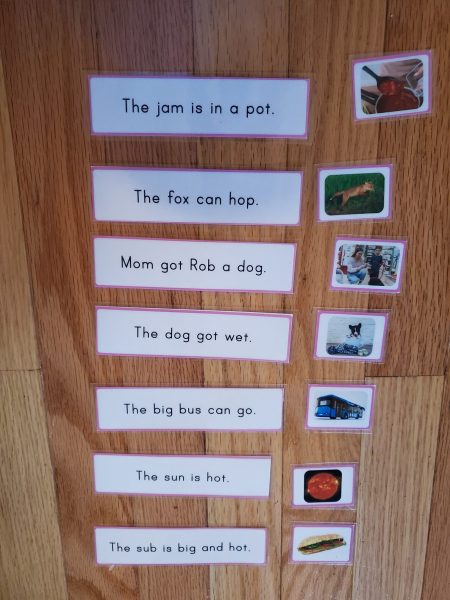Unlocking Language Potential
How language learning, writing, and reading are approached in Montessori education:
How language learning, writing, and reading are approached in Montessori education:
- Oral language development: Montessori emphasizes the importance of oral language development as a foundation for reading and writing. In the early years, children engage in conversations, storytelling, and vocabulary-building exercises with their peers and teachers. They are encouraged to express themselves verbally and listen actively to others, which helps develop communication skills.
- Pre-writing skills: Before children begin formal writing, Montessori focuses on pre-writing activities to develop fine motor skills and hand-eye coordination. Children use materials like the sand tray or the metal insets, where they trace shapes and patterns to strengthen their hand muscles and prepare for writing.
- Moveable alphabets: Montessori classrooms typically include a moveable alphabet, which consists of individual letters that can be picked up and manipulated by the child. This material allows children to explore language and experiment with making words before they can physically write. They can form words, phrases, and sentences using the moveable letters, which helps develop their understanding of letter-sound relationships and syntactic structures.
- Reading and comprehension: Montessori uses a phonetic approach to reading, where children learn the sounds and symbols of letters and phonograms. Students start with basic phonetic words, gradually progressing to more complex language patterns. They work with reading materials such as phonetic reading books, which contain words and sentences focusing on specific phonetic sounds and blends. The emphasis is on building reading fluency, comprehension, and vocabulary.
- Storytelling and literature: Montessori values the importance of storytelling and exposure to quality literature. Teachers read aloud to children, exposing them to various genres, engaging stories, and rich vocabulary. This helps in developing a love for reading and exposes children to different forms of literature, fostering creativity and imagination.
- Grammar and syntax: Montessori introduces grammar and sentence structure through hands-on materials such as the grammar boxes or the function of words. These materials help children understand the different parts of speech, syntactical structures, and punctuation. By working with these materials, students gain a deeper understanding of language structures and grammar rules.
- Writing and composition: Montessori encourages children to write from an early age. They start by practicing their handwriting using materials like sandpaper letters or the metal insets. As their writing skills progress, students engage in various writing exercises, such as journaling, creative writing, and research projects. They learn to express their thoughts, ideas, and experiences in written form, enhancing their communication skills.


It’s important to note that while these are general principles and practices in Montessori language learning, each Montessori school may have slight variations in their approach based on the specific curriculum and materials they use.

